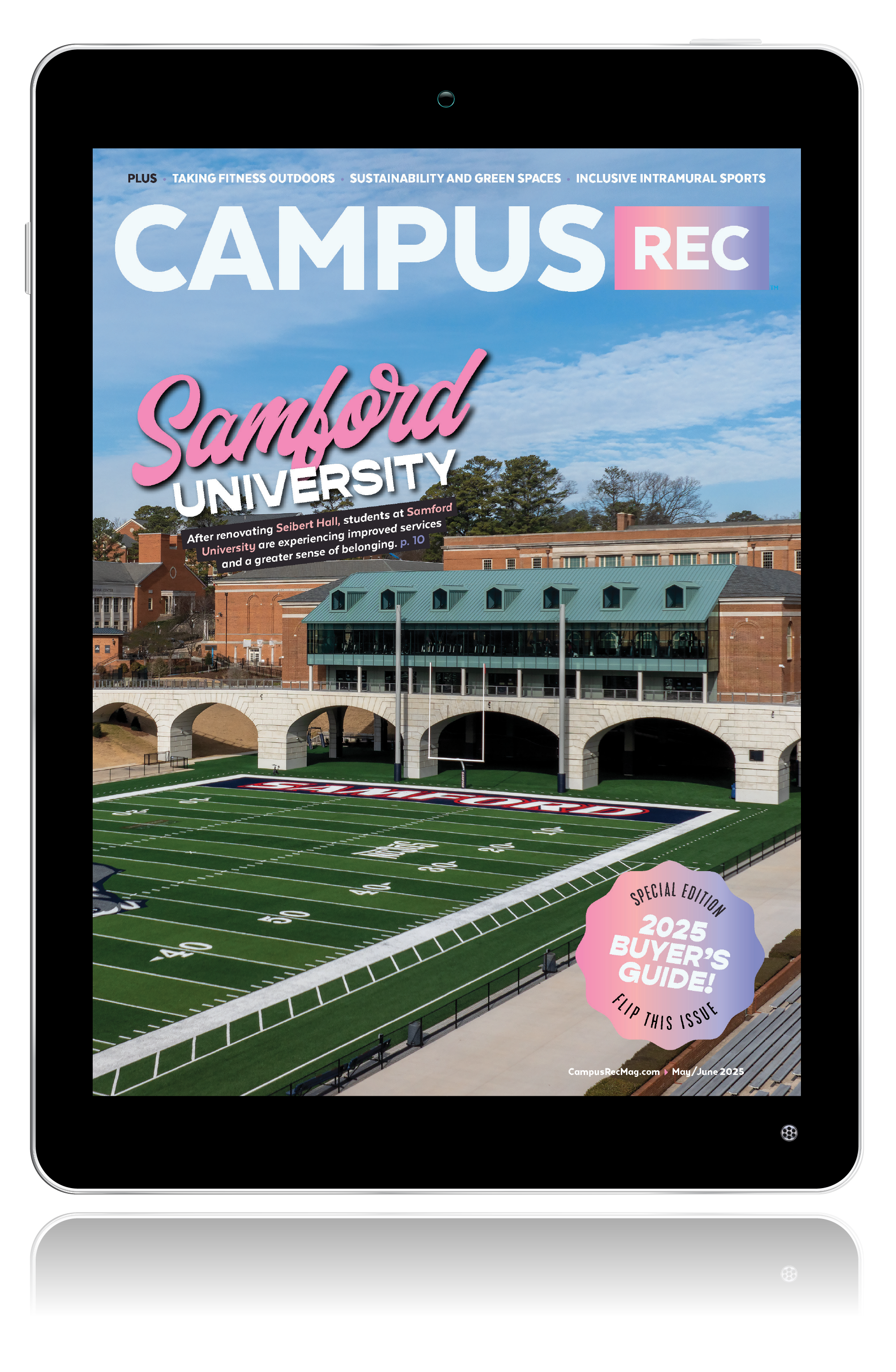As we all know, many people have left their trainers and turned to virtual training. However, there is a segment of the population who needs in-person training. For those with autism, supporting research shows in addition to the health-related benefits, exercise improves focus, on-task behavior and language development, and reduces maladaptive or stereotypical behaviors (1-5).
Autism spectrum disorder (ASD) is the fastest-growing developmental disability in the world (5). According to the U.S. Centers for Disease Control and Prevention, one in 54 children is diagnosed with autism. Most persons with autism learn best with individualized, in-person instruction in both the school and therapy settings — e.g., physical, occupational, behavioral.
Autism Exercise Programs Require a Different Approach
Having fitness centers welcome this community is the first step, as many are turning away those with autism because they don’t understand how to work with them. Just as you educate and prepare yourself to lead a HIIT, yoga or spin class, it is even more critical when working with persons with autism. The reality is, developing an exercise plan for this community that is 90% correct will most likely result in 100% failure – for them and you.
The right program will not just result in exercise success, but life-changing results for them, their families and probably you. So, it begins by building the relationship and understanding how this community learns best. This is an opportunity to find clients who want and need your services, replacing the Pelaton groupies. They’re waiting, so let’s get moving.
Creating an “Autism Ready” Gym Experience
1. Start with Building a Relationship
Fitness professionals frequently share their knowledge of human anatomy when talking with new clients. When you are talking with an individual with autism or their family, you should focus on building rapport, not their exercise knowledge. For example, ask questions like:
- What do you like to do for fun?
- Do you like exercising?
- Do you want to be here?
Finally, give them a compliment and find a way to make a connection.
2. Prepare for the Facility Tour
When a person with autism is going to tour, let the entire facility staff know. Autism characteristics such as spinning, rocking and hand flapping could present themselves during the tour. These out-of-the-ordinary behaviors could cause staff or their clients to stare, making it uncomfortable. So, to be an inclusive fitness center, all staff need to take a course on disability education. Also, have a quiet room ready to talk and answer questions during or after the tour.
3. Adjust the Physical Assessment
With many clients, completing a full physical assessment in one session is not practical. This can depend on both their age and ability level. Think of the assessment as another opportunity for you to build a positive relationship and embed exercises when possible. Moreover, if the individual comes dressed in jeans, a polo shirt and wearing penny loafers, just assess what you can.
References:
- Elliott RO Jr, Dobbin AR, Rose GD, Soper HV. Vigorous, aerobic exercise versus general motor training activities: effects on maladaptive and stereotypic behaviors of adults with both autism and mental retardation. J Autism Dev Disord. 1994;24(5):565-76. Epub 1994/10/01. doi: 10.1007/BF02172138. PubMed PMID: 7814306.
- Nicholson H, Kehle TJ, Bray MA, Heest JV. The effects of antecedent physical activity on the academic engagement of children with autism spectrum disorder. Psychol Sch. 2011;48(2):198-213. doi: 10.1002/pits.20537.
- Schmitz Olin S, McFadden BA, Golem DL, et al. The effects of exercise dose on stereotypical behavior in children with autism. Med Sci Sports Exerc. 2017;49(5):983-90. Epub 2017/01/07. doi: 10.1249/MSS.0000000000001197. PubMed PMID: 28060033.
- Sowa M, Meulenbroek R. Effects of physical exercise on autism spectrum disorders: a meta-analysis. Res Autism Spectr Disord. 2012;6(1):46-57. doi: 0.1016/j.rasd.2011.09.001.
- Tse ACY, Liu VHL, Lee PH. Investigating the matching relationship between physical exercise and stereotypic behavior in children with autism. Med Sci Sport Exerc. 2021;53(4):770-775. doi: 10.1249/MSS.0000000000002525.
By David S. Geslak, the founder of Exercise Connection. He has pioneered exercise tools and programs to engage and improve the lives of those with autism. David created the award-winning, research-supported app, Exercise Buddy®, and in partnership with American College of Sports Medicine (ACSM), he developed the Autism Exercise Specialist Certificate®. This was ACSM’s #2 most popular CEC Course of 2019 & 2020. His commitment and methodology to bringing exercise to those with autism has been enthusiastically embraced around the world by professionals, higher education, and the autism community.










